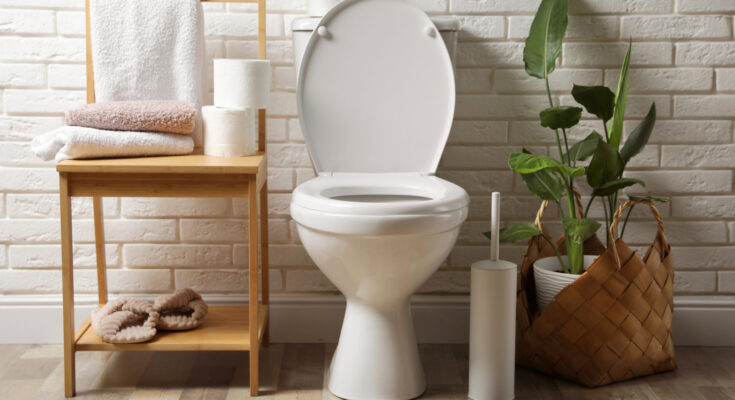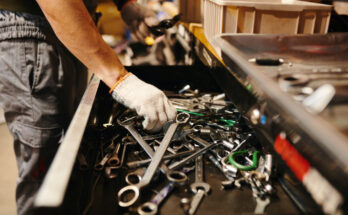How Many Toilet Brushes Do You Actually Need In Your Home?
We may receive a commission on purchases made from links.
For a cleaning tool you probably don’t think about most of the time, there’s a surprising amount of conflicting advice on toilet brushes out there. Cleaning experts’ guidance varies when answering questions like how often should you replace your toilet brush? Are certain brushes better than others? Should you ditch toilet brushes altogether and try a different approach? If toilet brushes are your go-to commode cleaning method, you also need to consider how many you should have on hand. For hygiene and convenience reasons, it’s recommended to have one toilet brush per toilet and to keep the brushes in the respective bathrooms they’re used in.
Think of it this way: would you take the used dish sponge from your kitchen sink and go wash your friend’s dishes with it in their kitchen? No, you’d probably realize that’s likely to spread germs, on top of being unnecessarily inconvenient. Now consider that the average toilet bowl contains 3.2 million bacteria microbes per square inch, some of which ends up on your brush every time you use it. One brush per toilet keeps you from introducing even more new bacteria from one bathroom to the other.
One brush per toilet is more hygienic
The number one reason to have one toilet brush per toilet is hygiene. Nobody wants to have a dirty toilet, either health-wise or visually. We all forget to clean the toilet sometimes, but if it’s a place you’ve been forgetting to clean for too long and there are pinkish-brown stains in the toilet bowl that just won’t go away, you may be dealing with something called a biofilm. These stains are actually a slimy layer of microorganisms that leave pink, red, brown, or black discoloration in your toilet bowl, depending on what bacteria makes up the biofilm. They form when microorganisms like bacteria in your toilet reproduce in their moist environment, then stick to their surface by secreting a glue-like ooze.
It sounds gross, and it certainly looks it, but not all germs are harmful; only around 1% to 2% of them are pathogenic, meaning they can cause illness. However, some bacteria occasionally found in toilets like norovirus and E. coli can be harmful, and biofilms make bacteria harder to kill and more resistant to cleaning products— like, for example, your toilet brush. If you scrub one bathroom’s biofilm-y toilet with a brush and then take that brush to a cleaner toilet in another bathroom, you risk spreading that entire colony of microorganisms to the second toilet, therefore creating more of the same problems you were trying to remove in the first place.
One brush per toilet is more convenient
On top of the hygienic reasons to have one brush per toilet, keeping a brush by every toilet is just plain easier. When it’s time to give your toilet a deep clean, having a brush within arm’s reach saves more than just time — it also means you don’t have to let the brush potentially drip its bacteria onto the floors between bathroom number one and bathroom number two, which you’d then have to clean up afterward. Instead, you can place the brush in its container right next to the toilet for convenience.
Make sure to clean each brush with bleach at least twice a month, and don’t skip cleaning the holder, too. Replace brushes every three to six months, or as soon as the bristles look frayed or discolored. For bonus hygiene, you can look for a brush that has waterproof properties like the Sellemer Silicon-Bristled Toilet Brush. Or, to reduce the work of cleaning your brushes so often, you could always opt for types with disposable pads like this Scrubbing Bubbles Toilet Wand.



